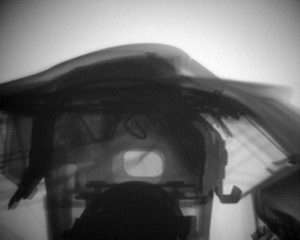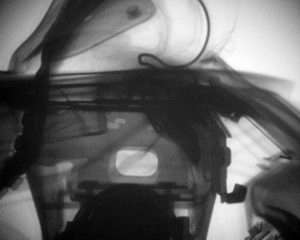Airbags in an X-ray movie

Critical events often occur with blinding speed and hidden from view. The ignition of an airbag, for instance, takes just 150 milliseconds. With X-ray cinematography, processes of this kind can now be viewed for the first time.
It's all over in the blink of an eye: sensors register the impact, then the airbag ignites, inflates and collapses. All in 150 milliseconds – at most. What happens in this short span of time has been thoroughly documented, or at least the visible part. However, the first ten to twenty milliseconds, during which the airbag is ignited and begins to unfold, are essentially hidden from view.

Until recently, only isolated photos of this critical phase existed – one image per ignition. This presents a problem: "One cannot draw conclusions about the overall process from just a single image", says Philip Helberg of the Fraunhofer Institute for High-Speed Dynamics, Ernst-Mach-Institute EMI in Efringen-Kirchen. Helberg and his colleagues have developed a procedure that makes it possible to render the entire process visible.
Using X-ray cinematography, an extension of flash X-ray technology, he creates entire image sequences with extremely short intervals of no less than ten microseconds between frames, that is 100,000 images per second. Due to the X-ray sources currently available, the process is actually limited to eight pictures.
But for the engineers, these eight pictures are enough. "A resolution of 1000 images per second is sufficient for examining the airbag ignition process", says Helberg. The sequence begins about five milli-seconds after the airbag is activated, and finishes eight images and eight milliseconds later. With the help of these exposures, airbag
manufacturers can now determine the best way to stow airbags in their housing so that they unfold in the optimum manner.
Thanks to an exposure time of only 20 nanoseconds, the X-ray cinematography process developed by the Fraunhofer researchers delivers exceptionally sharp images. "This represents a level of quality that is unique so far", enthuses Helberg. For recording the image sequences, he employs a sophisticated shooting technique: the X-ray flashes irradiate the object under examination – such as an airbag – from one direction. The unabsorbed radiation strikes a fluorescent film on the opposite side and illuminates it – albeit only for 1.6 microseconds, a period of time imperceptible to the naked eye. But these images are registered by the CCD cameras positioned behind the film, making visible what would be hidden to the naked eye.
Source: Fraunhofer-Gesellschaft





















